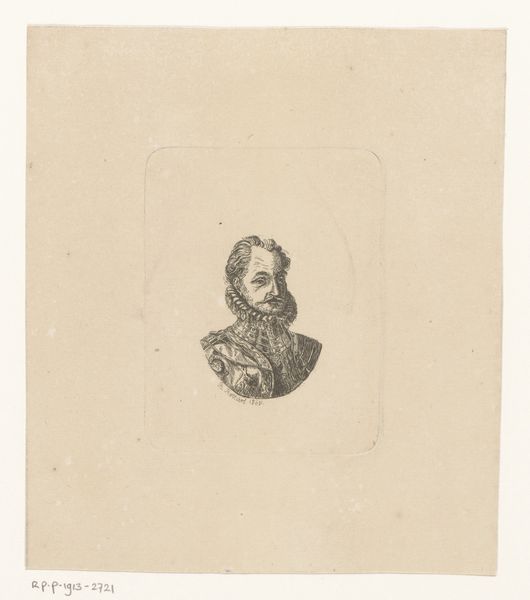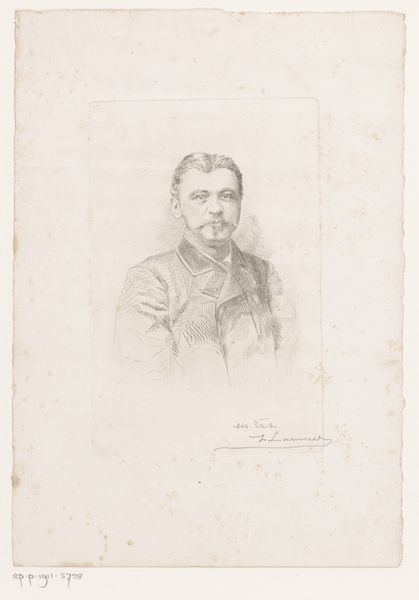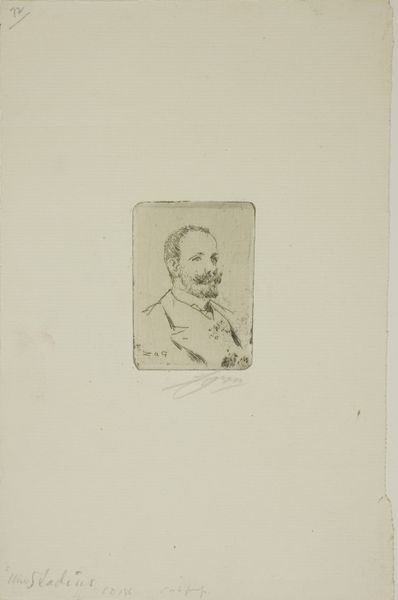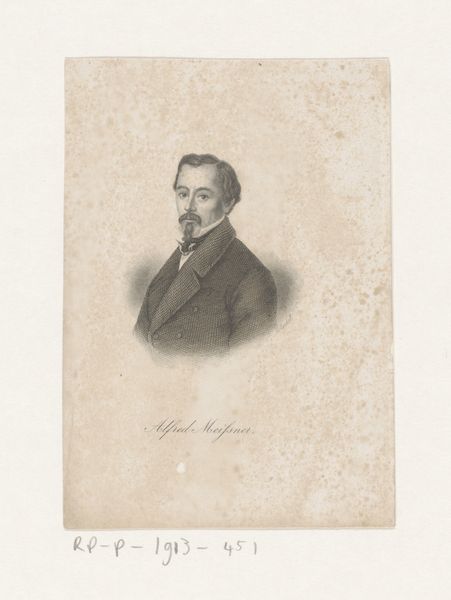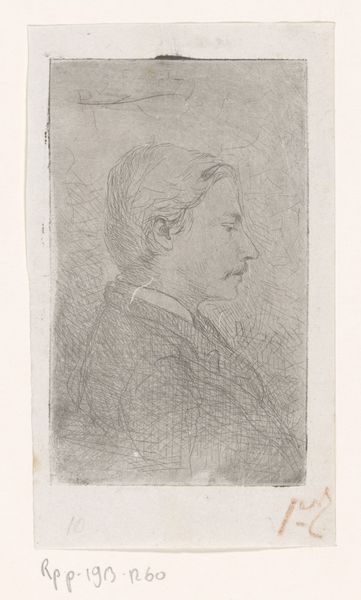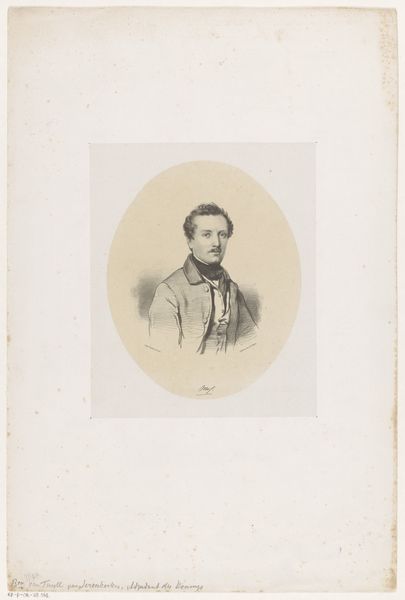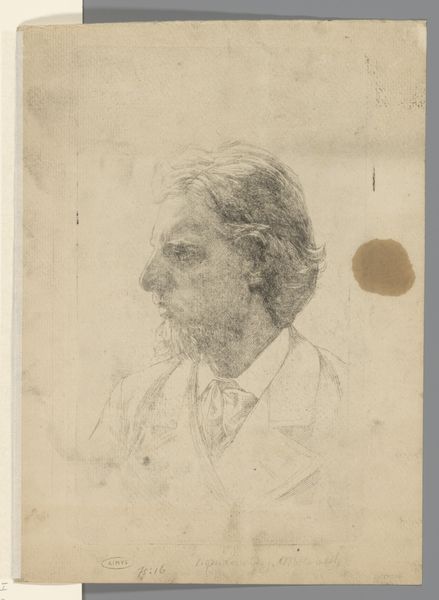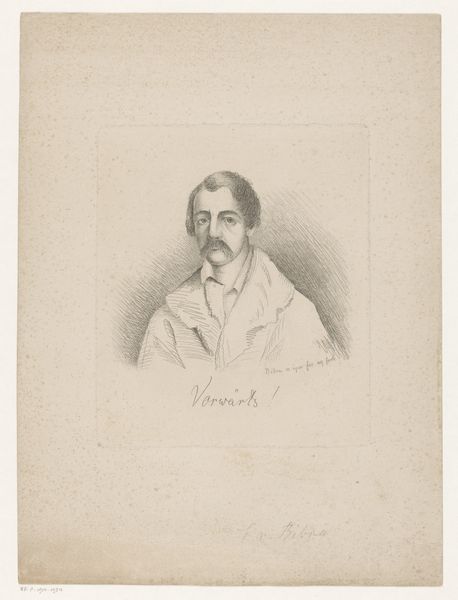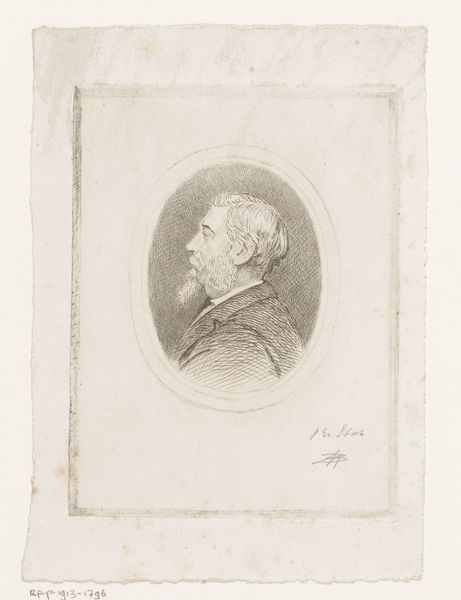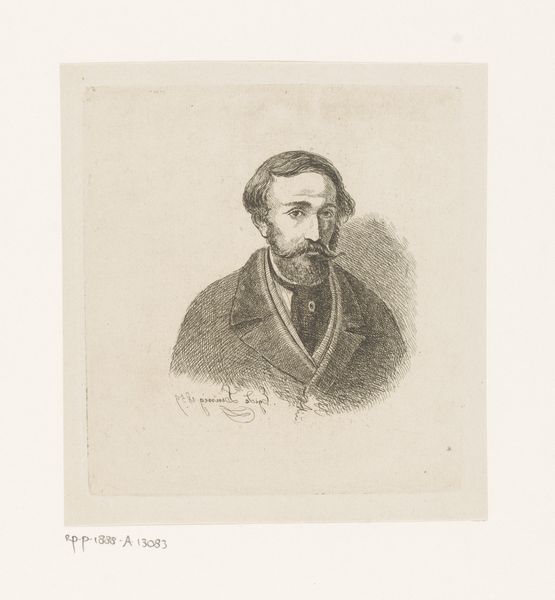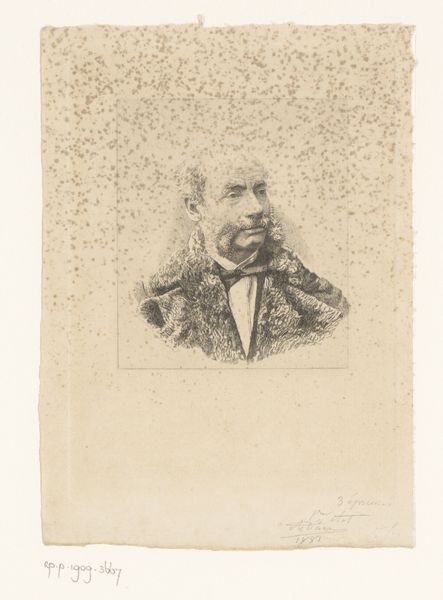
drawing, pencil
#
portrait
#
drawing
#
pencil drawing
#
pencil
#
portrait drawing
#
academic-art
#
realism
Dimensions: sheet: 28.8 × 20.9 cm (11 5/16 × 8 1/4 in.)
Copyright: National Gallery of Art: CC0 1.0
Curator: Here we have William de Hartburn Washington's portrait drawing, titled "J.Q.A. Ward," rendered in pencil around 1858. Editor: The stark, almost unsettling directness of his gaze immediately strikes me. There’s a power conveyed, despite the seemingly unfinished quality and monochrome palette. Curator: The artist's hand is evident in the delicate cross-hatching used to model the figure's coat. The texture in his beard and hair shows the meticulous detailing that was emphasized during the Realist movement, demonstrating the ability to capture likeness. Editor: It's fascinating how the beard becomes such a dominant symbol, a visual assertion of masculinity. This work seems to almost participate in a culture that emphasized virility and individual expression against a backdrop of growing national division. Who was J.Q.A. Ward, I wonder? Curator: Ward was an American sculptor known for civic monuments and portrait busts. Washington’s technical skill really shines through in the convincing representation of volume and light, creating an illusion of depth. Note the subtle use of shading. Editor: His assured, pipe-clenched pose suggests status and a certain worldliness. This image prompts questions about who had the privilege of being represented in this era. How did the sitters experience being subjected to this sort of intense scrutiny? I also question the near absence of backgrounds within these older drawings. It lends them an element of coldness. Curator: While it is sparse in extraneous details, that very absence spotlights form and texture. There's a purity here that transcends mere representation. It's about distilling the essence of form. Editor: Perhaps. For me, it raises questions of identity and power relations embedded in portraiture. These images serve as enduring records. Curator: An astute point, considering both historical context and material practice. Editor: I am appreciative for the time to be able to address issues of visibility and representation.
Comments
No comments
Be the first to comment and join the conversation on the ultimate creative platform.

